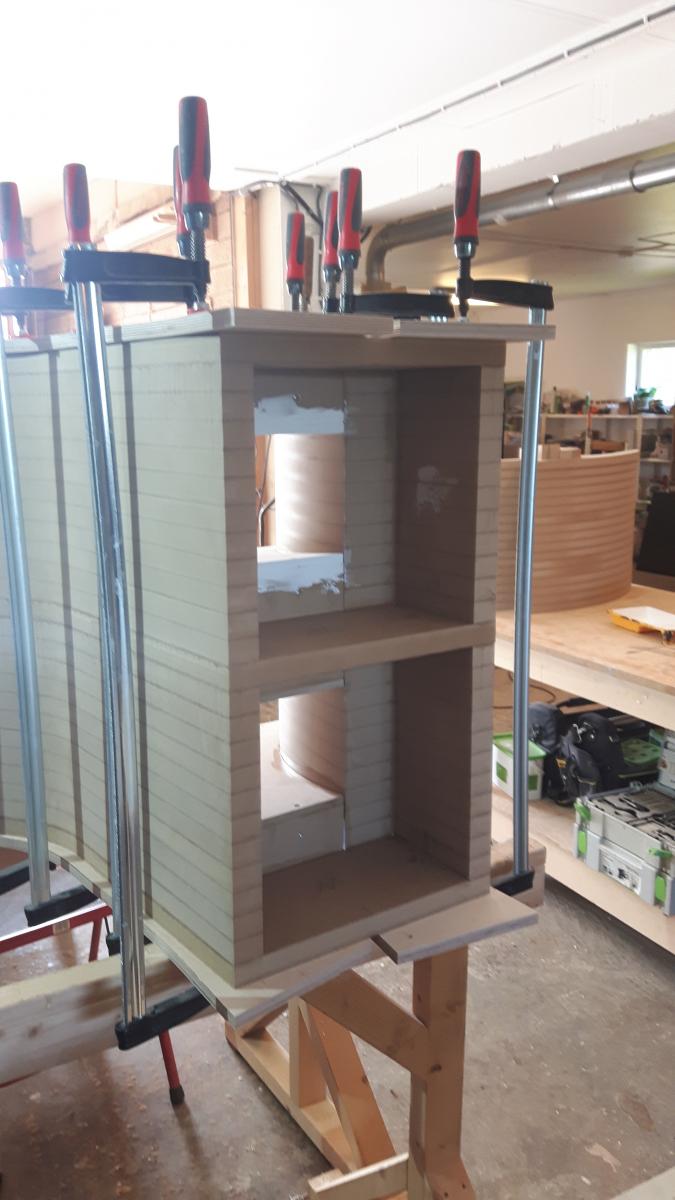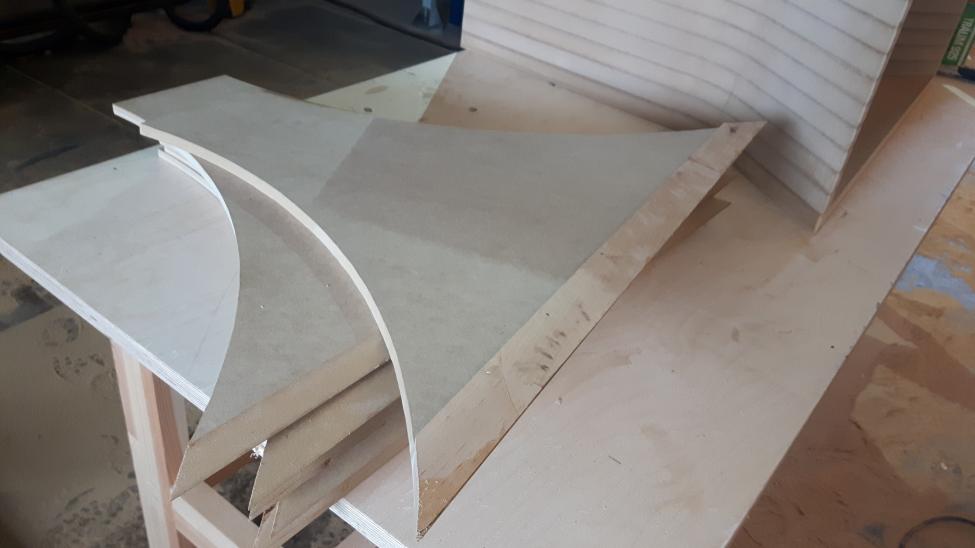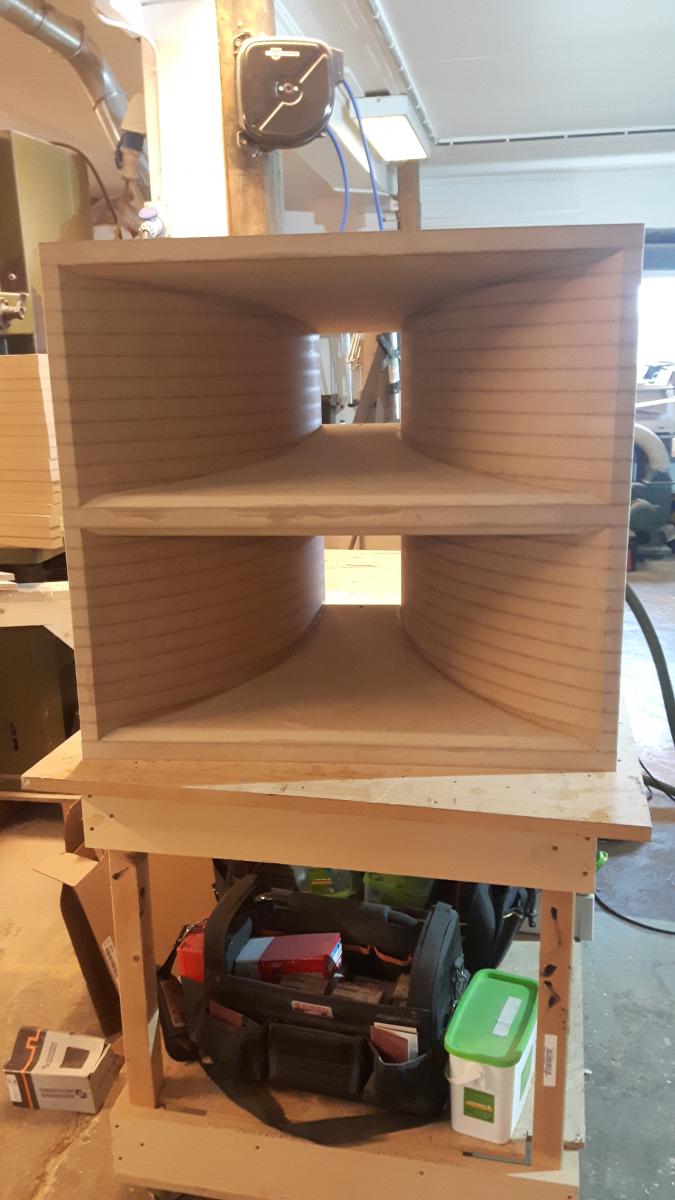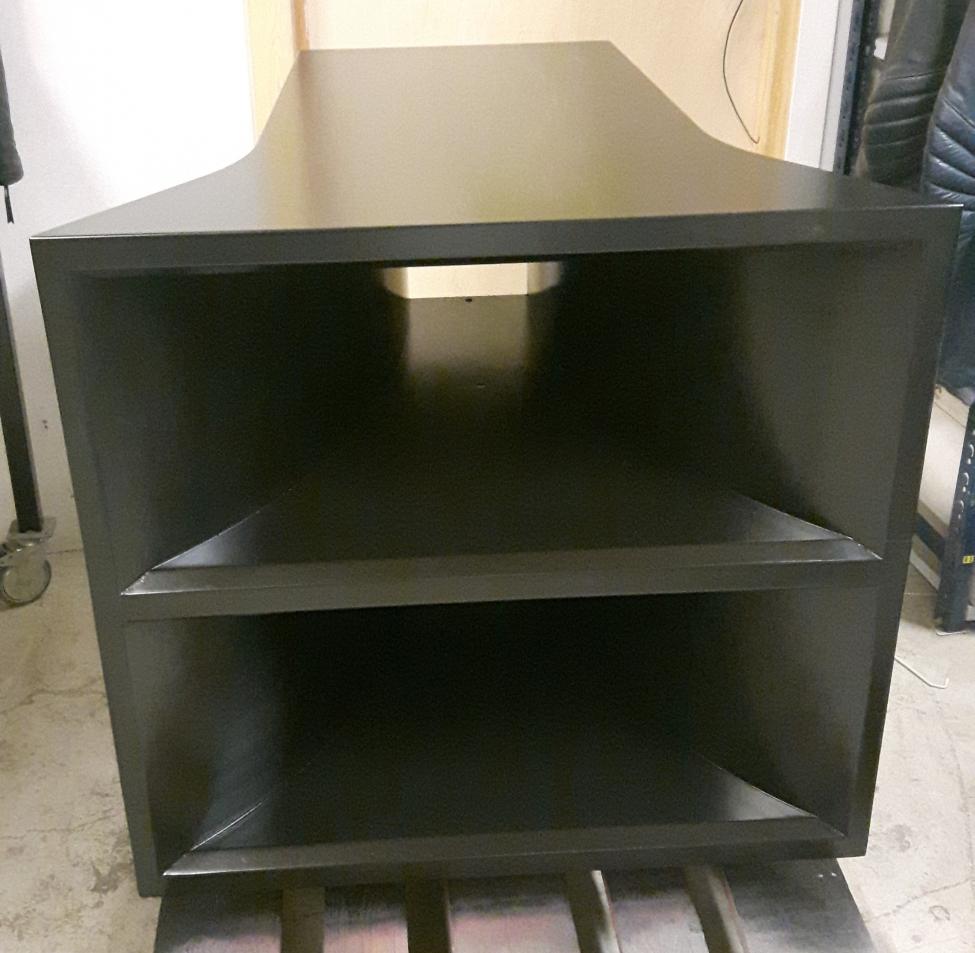Hello Lewinski.
The drivers are GPA 515C16. They are 15" units.
I built them after prototyping a SLOB setup with a friend of mine for his stereo, with 10 woofers per side. I had to downscale a bit to be able to fit in my room. Open baffle speakers in the bass region needs massive cone area to work properly. Also my SLOB has a lot more compression than Nelsons, and that eats away at the efficiency even more. The tradeoff is even more bottom end.
I strongly believe that with more compression, high quality drivers with a strong magnet system and low Q is the way to go. I'm not a fan of the high Q units often used for open baffles.
The need for this many drivers will be a subjective matter. It depends on how loud you are going to want to play, how much bottom end you are going to tune the system to play with and how your room responds to lower frequencies. As far as I know, there is no easy way to simulate SLOBS, so you should maybe make a prototype with fewer drivers before you go all the way.
The drivers are GPA 515C16. They are 15" units.
I built them after prototyping a SLOB setup with a friend of mine for his stereo, with 10 woofers per side. I had to downscale a bit to be able to fit in my room. Open baffle speakers in the bass region needs massive cone area to work properly. Also my SLOB has a lot more compression than Nelsons, and that eats away at the efficiency even more. The tradeoff is even more bottom end.
I strongly believe that with more compression, high quality drivers with a strong magnet system and low Q is the way to go. I'm not a fan of the high Q units often used for open baffles.
The need for this many drivers will be a subjective matter. It depends on how loud you are going to want to play, how much bottom end you are going to tune the system to play with and how your room responds to lower frequencies. As far as I know, there is no easy way to simulate SLOBS, so you should maybe make a prototype with fewer drivers before you go all the way.
Looking great!
As of now I'm focused on designing my first horn, which is a midrange. But I'm very interested in learning about your design process and results because a midbass horn might be my next one.
Did you model this horn ahead of building? Would you mind posting info about the model. I'm learning to use Hornresp and would like to understand how to model your design there and then compare to how it measures, when you are done. I'm assuming you'll post measurements 😀
BTW, in my living room I would sit 2.4m from the mouth of each horn. Would that be enough distance for the system to integrate? I've seen comments saying 3.5m minimum required, and some saying 2.5m would be enough. What's your opinion?
As of now I'm focused on designing my first horn, which is a midrange. But I'm very interested in learning about your design process and results because a midbass horn might be my next one.
Did you model this horn ahead of building? Would you mind posting info about the model. I'm learning to use Hornresp and would like to understand how to model your design there and then compare to how it measures, when you are done. I'm assuming you'll post measurements 😀
BTW, in my living room I would sit 2.4m from the mouth of each horn. Would that be enough distance for the system to integrate? I've seen comments saying 3.5m minimum required, and some saying 2.5m would be enough. What's your opinion?
Thank you!
I did model these with great help from a fellow DIY'er here in Norway with great knowledge about horn design. Therefore I cannot help you a lot, but I did draw and design the horn without much simulation to start.
I typically knew the lenght and width of the horn that would work, as well as the compression at the throat.
After the initial 3D models the simulations of the acoustics helped me smooth out the impedance and general response of the horn with a few adjustments of lenghts, compression and flare.
I can post some measurements when they are installed.
With my previous horns a distance of approx 2.5m is not a problem; it is actually what I preffer. Integration with good crossovers and phase/time is more important.
I did model these with great help from a fellow DIY'er here in Norway with great knowledge about horn design. Therefore I cannot help you a lot, but I did draw and design the horn without much simulation to start.
I typically knew the lenght and width of the horn that would work, as well as the compression at the throat.
After the initial 3D models the simulations of the acoustics helped me smooth out the impedance and general response of the horn with a few adjustments of lenghts, compression and flare.
I can post some measurements when they are installed.
With my previous horns a distance of approx 2.5m is not a problem; it is actually what I preffer. Integration with good crossovers and phase/time is more important.
Thank you!
I did model these with great help from a fellow DIY'er here in Norway with great knowledge about horn design. Therefore I cannot help you a lot, but I did draw and design the horn without much simulation to start.
I typically knew the lenght and width of the horn that would work, as well as the compression at the throat.
Understood. Maybe I can build the Hornresp model with your data. What's the mouth size? Throat, horn length, flare?
With my previous horns a distance of approx 2.5m is not a problem; it is actually what I preffer. Integration with good crossovers and phase/time is more important.
Great. Mine are digital xo, time aligned, linear phase.
So, it's been a long summer vacation with a paternity leave and outdoor activities. The winter darkness is slowly showings its presence, and it's time to focus on horns and music again!
Picked up the horns this week...man my arms are tired.
I adjusted the horn design so that they would slide through my door openings with 3mm of tolerance. Theory and practice aligned this time...
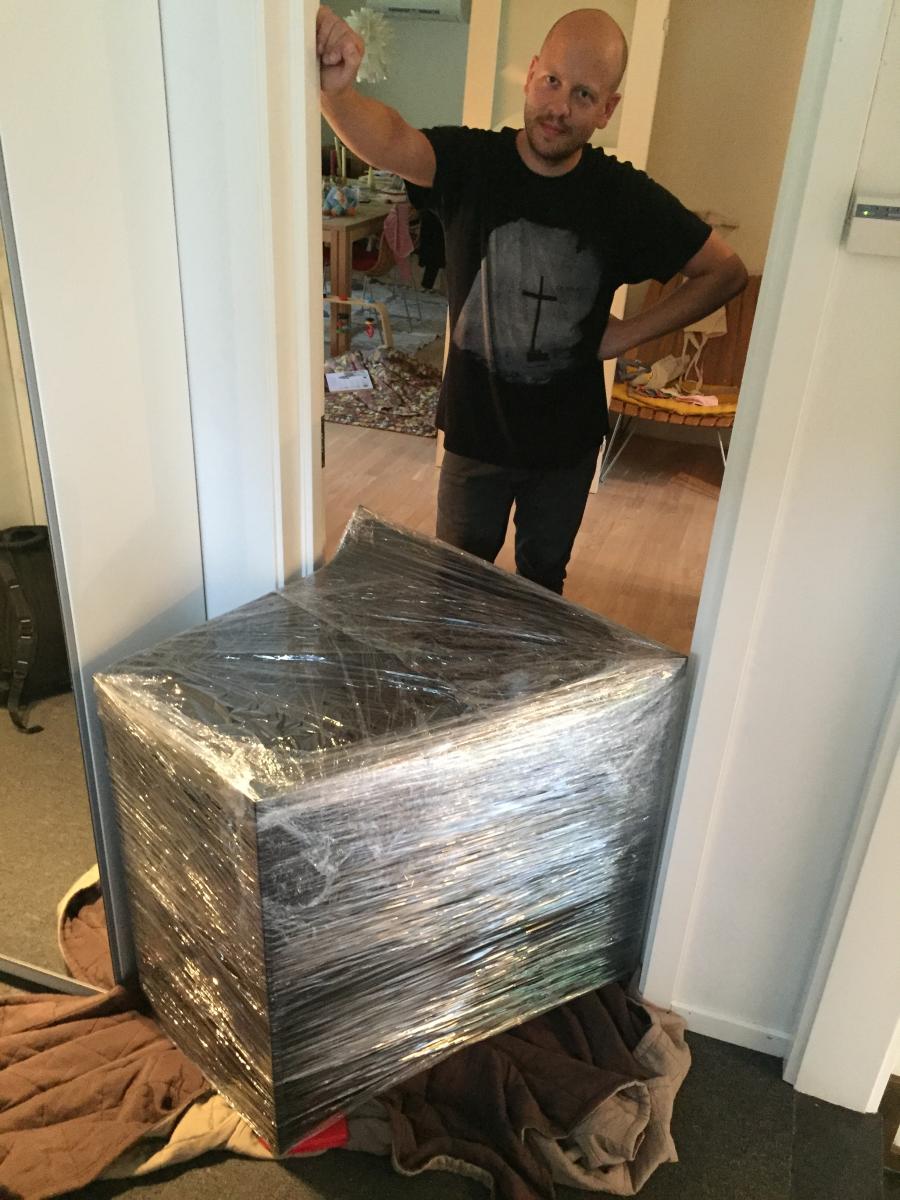
Final arrival in my livingroom...the staircase proved to be a challenge, but they "landed" with no chips in the paint.
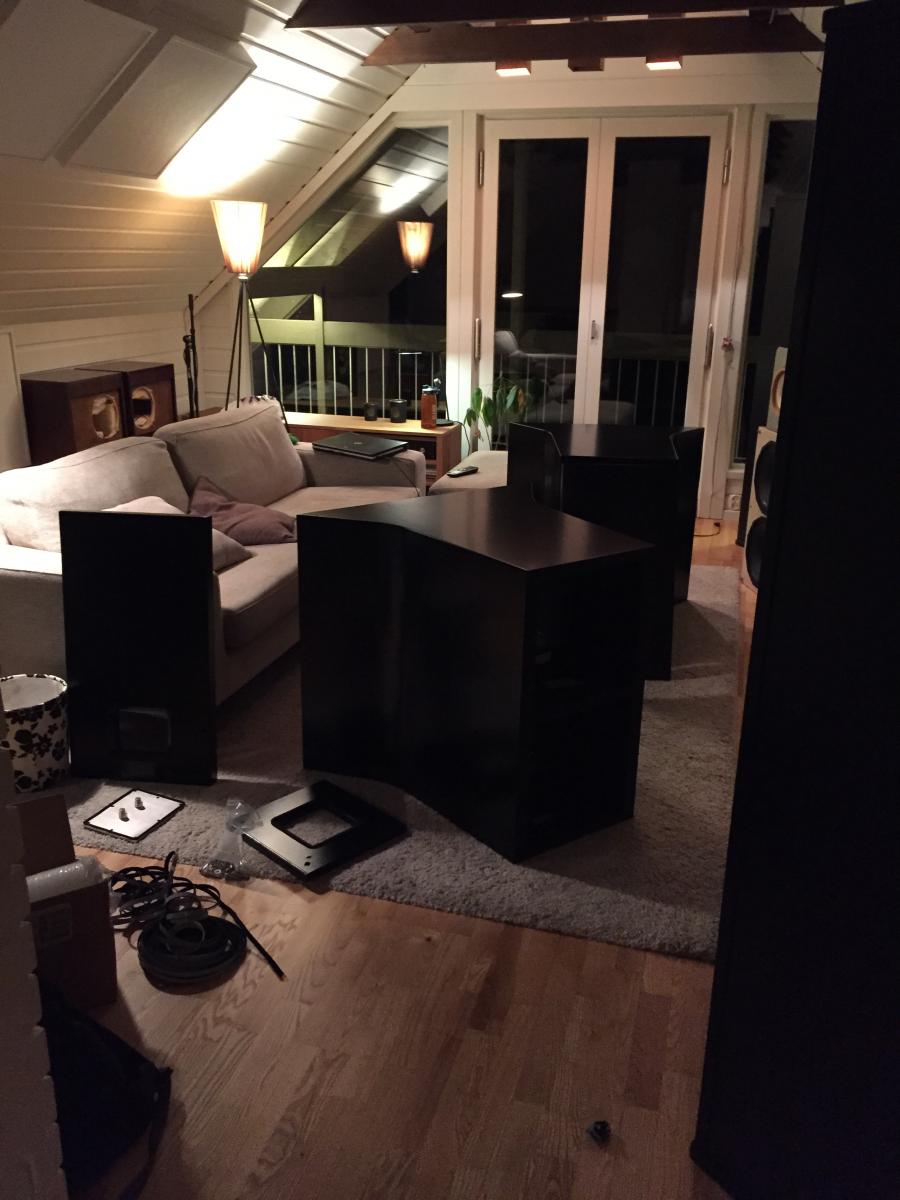
Picked up the horns this week...man my arms are tired.
I adjusted the horn design so that they would slide through my door openings with 3mm of tolerance. Theory and practice aligned this time...

Final arrival in my livingroom...the staircase proved to be a challenge, but they "landed" with no chips in the paint.

Some building pictures this time also, but with a baby in the house I didn't take as many as last time.
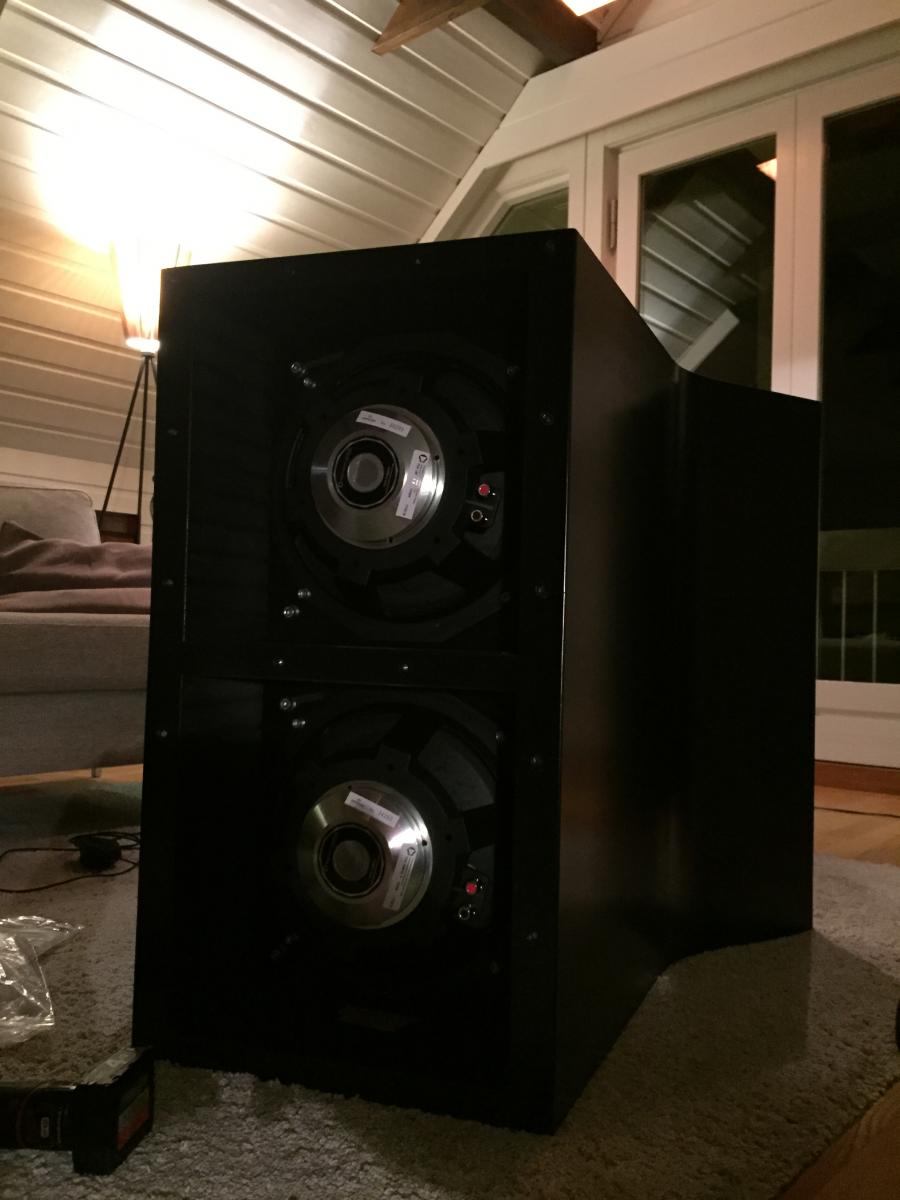
The drivers on their way into the horn, via the adapter plate. Both adapter plate and drivers mounted with M8 and M6 allen head bolts.
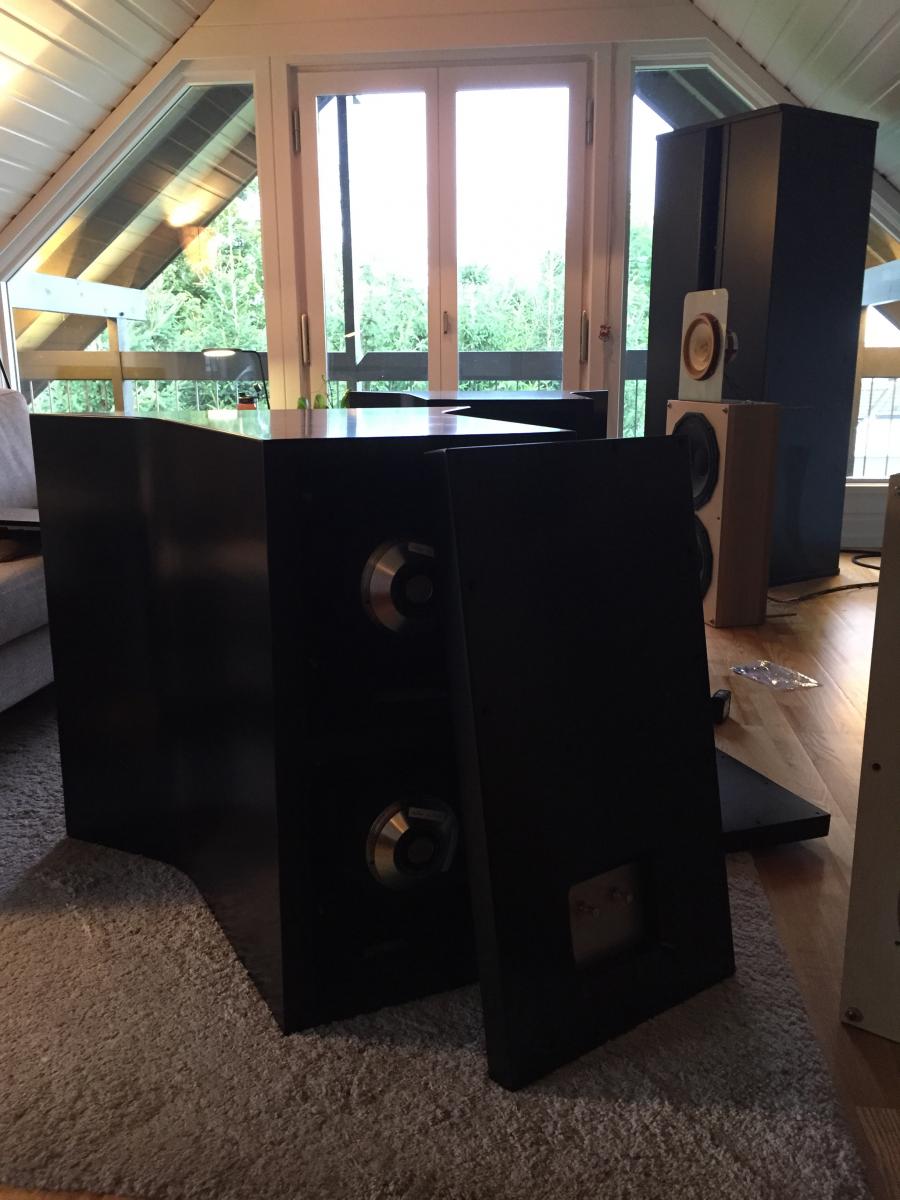
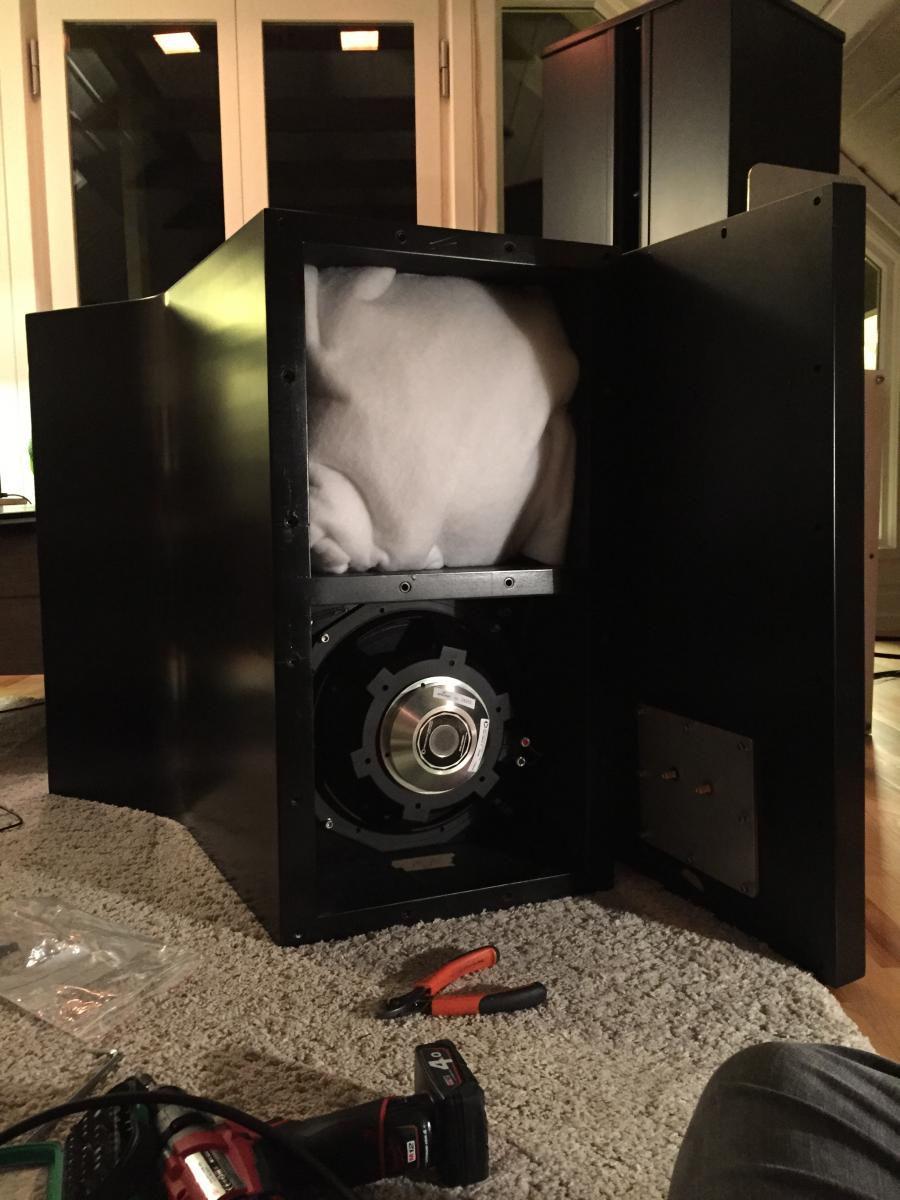
Some damping material is needed as well, before soldering the wires to the terminals, placing the double gaskets and mounting the rear plate.

The drivers on their way into the horn, via the adapter plate. Both adapter plate and drivers mounted with M8 and M6 allen head bolts.


Some damping material is needed as well, before soldering the wires to the terminals, placing the double gaskets and mounting the rear plate.
Very nice. Are the Allen M8 attaching directly to the MDF? In other words the thread is on the MDF and you don't go crazy with torque.
Very nice. Are the Allen M8 attaching directly to the MDF? In other words the thread is on the MDF and you don't go crazy with torque.
All wood-screw interfaces are via Rampa inserts:
Looks great!
Thanks! There will be more frequent updates on the norwegian forum (sentralen).
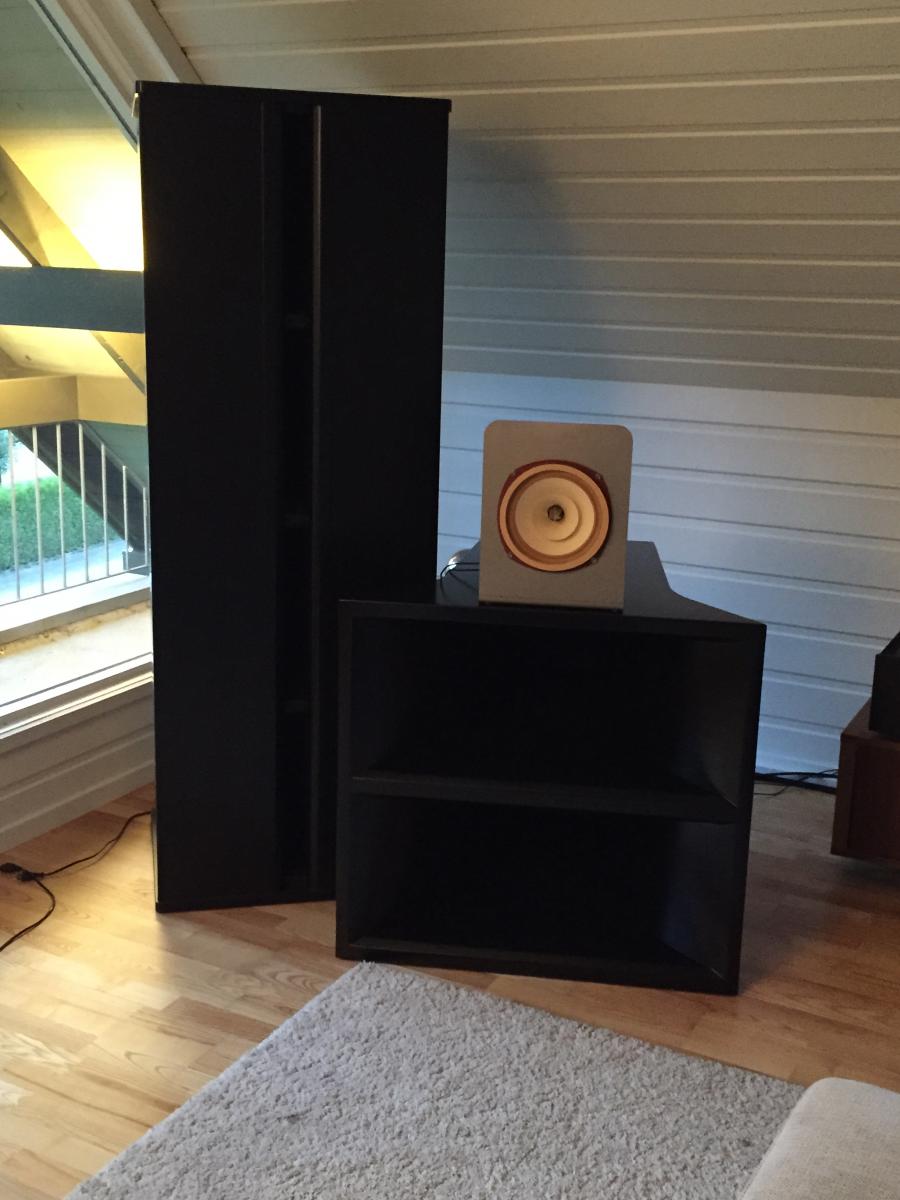
Temporary setup with Coral Beta 8
Hey PMA!
Was wondering about the latest on your system?
Cheers
- Status
- Not open for further replies.
- Home
- Loudspeakers
- Multi-Way
- My DIY Horn setup
